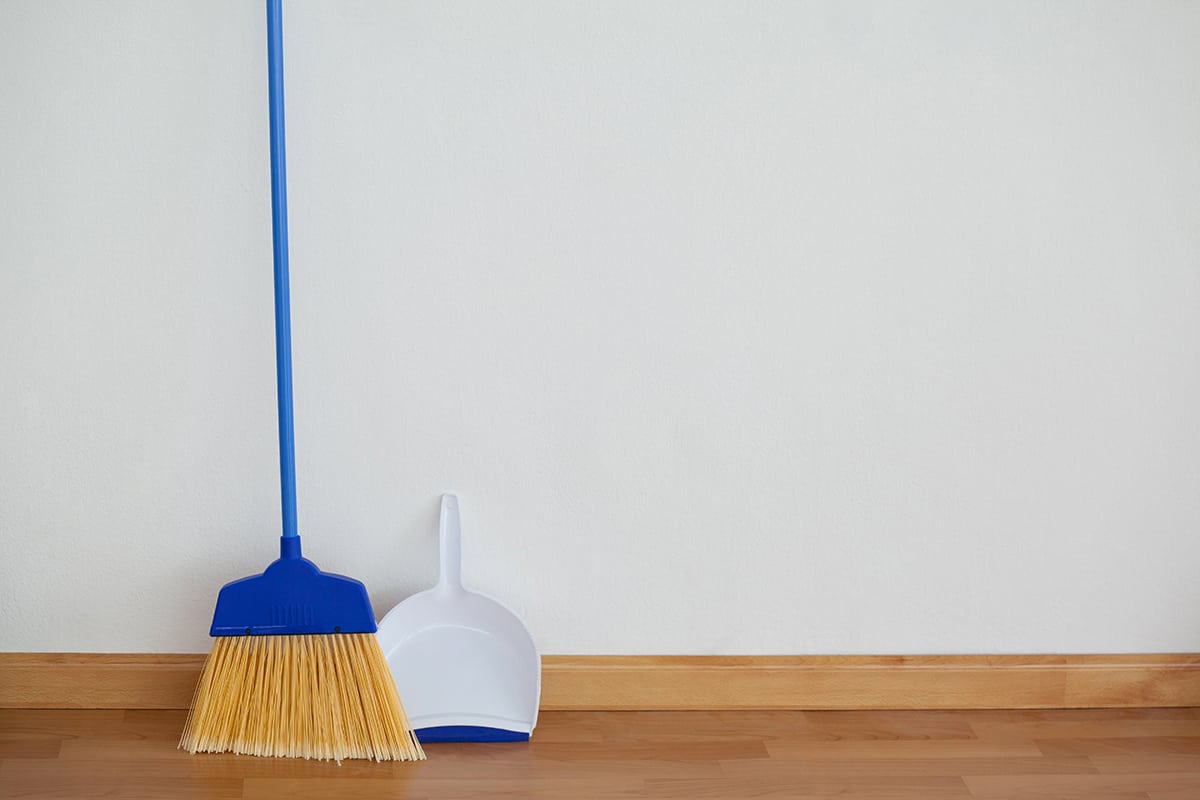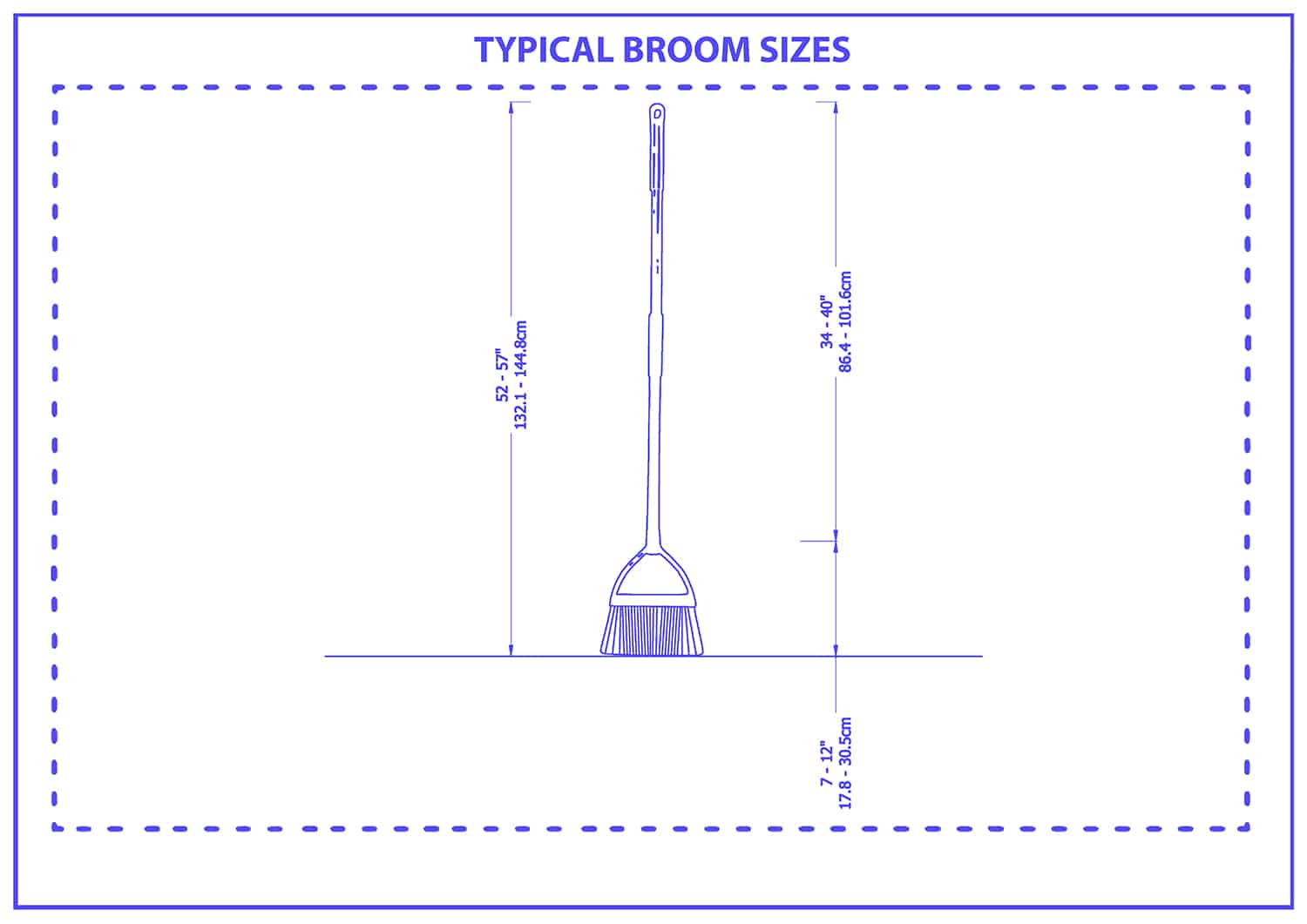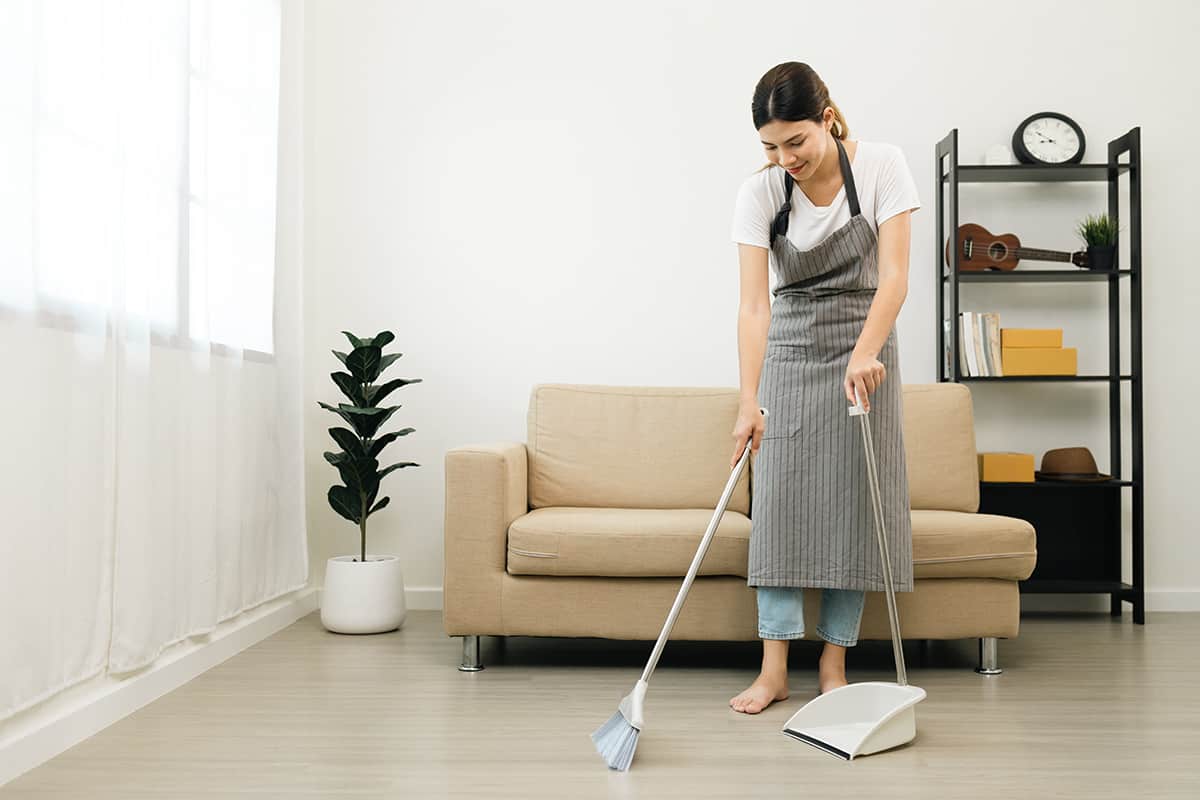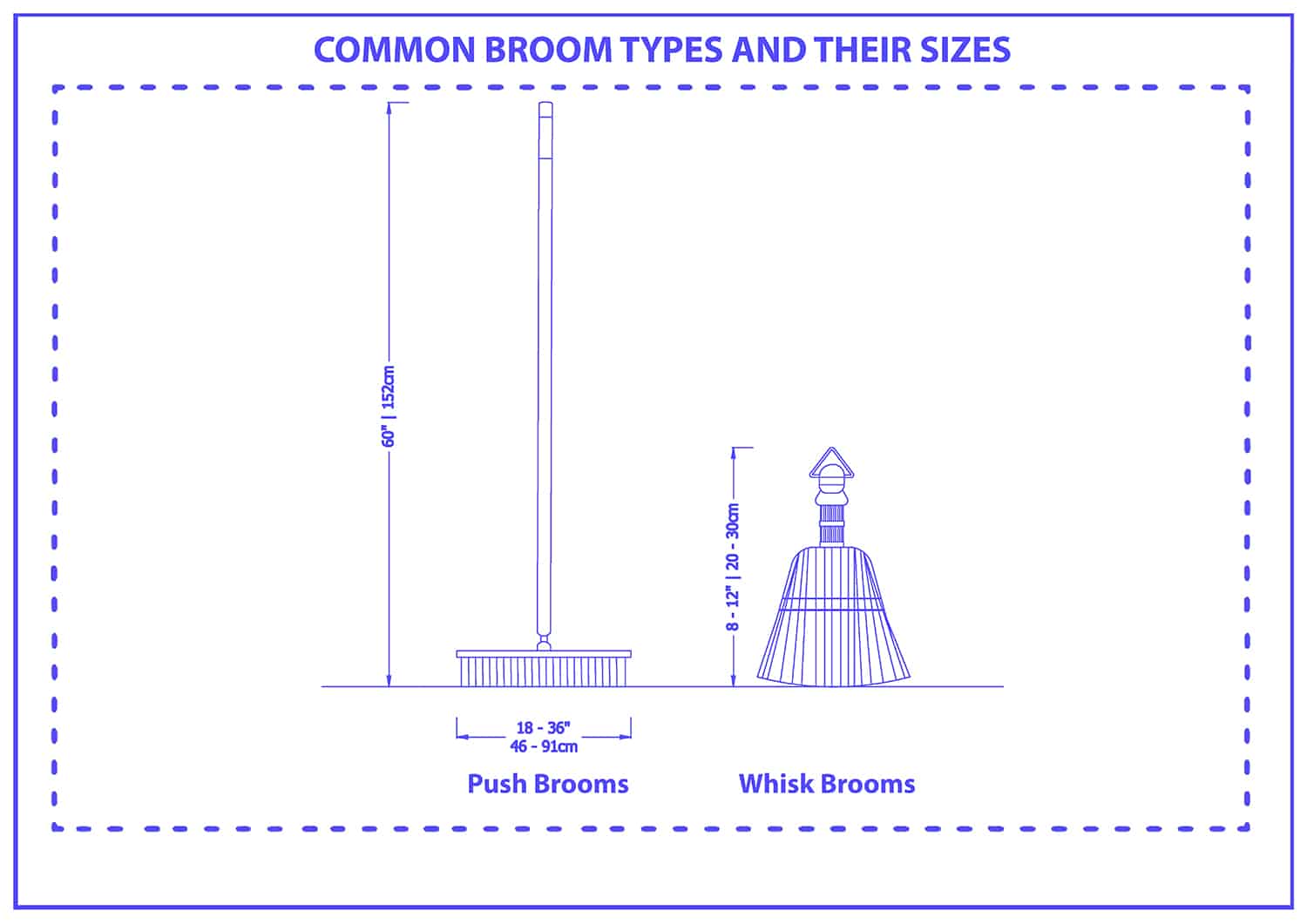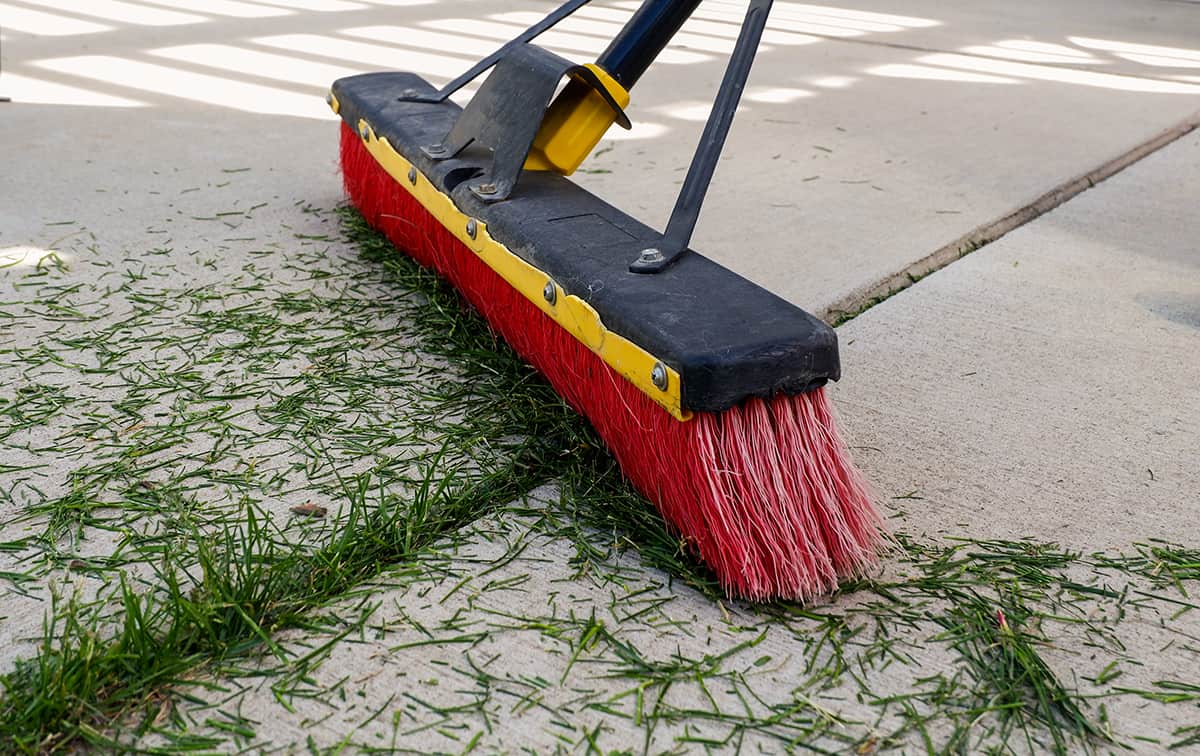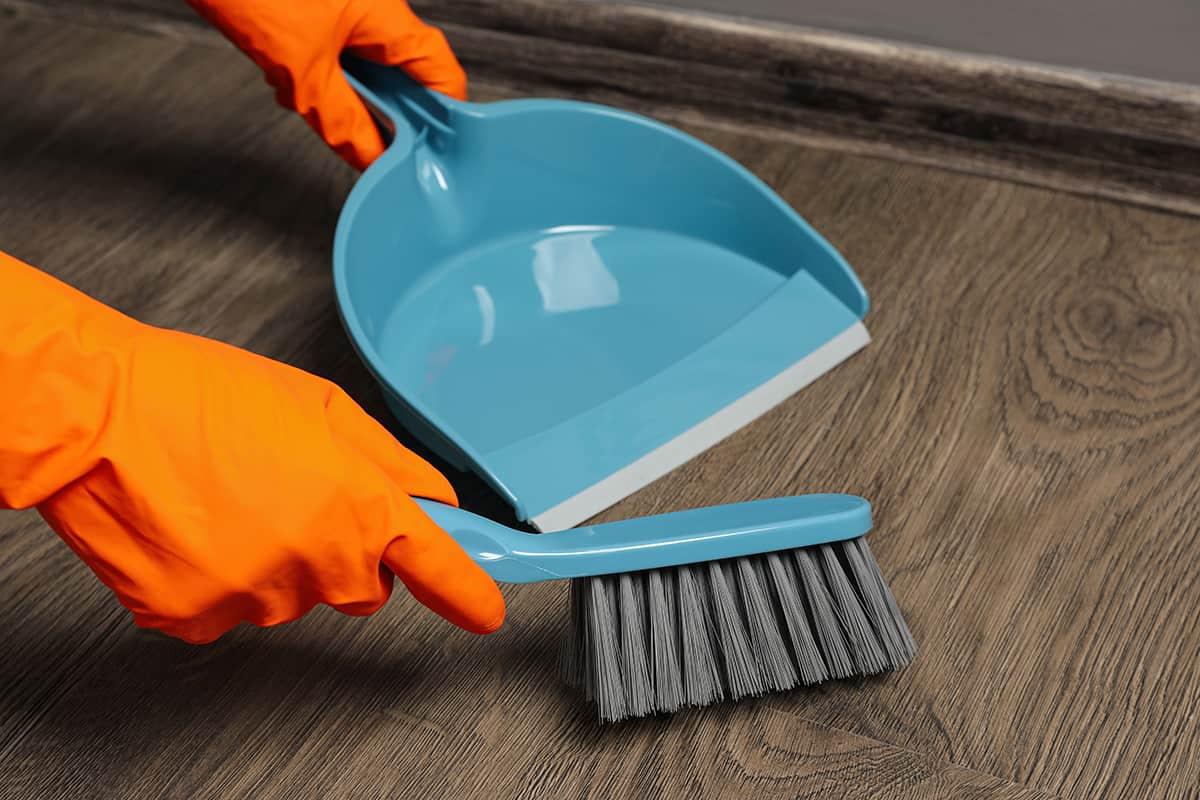Brooms have long been a cornerstone of home maintenance, unassuming yet vital in maintaining cleanliness. They come in a variety of shapes, sizes, and styles, designed for different surfaces and types of debris. The size of a broom can significantly affect its efficiency, comfort of use, and storage.
The standard broom size typically ranges from 52 to 57 inches (132 to 145 cm) in total length. This includes a 34 to 40-inch (46 to 102 cm) handle and an 18-inch-long (101 cm) broom head. The width of the broom head usually spans between 7 to 12 inches (18 to 30 cm).
This guide will cover the world of broom sizes, their types, and when best to use a specific type of broom.
Understanding Broom Sizes
The size of your broom can greatly impact the effectiveness of your cleaning. A larger broom, with a wider head and longer handle, can cover more surface area in one sweep, making it ideal for larger rooms or outdoor areas. A smaller broom, on the other hand, is easier to maneuver in tight spaces and can reach corners that a larger broom may miss.
Larger brooms can be heavier and require more physical effort to use, potentially causing strain over prolonged periods. Smaller brooms, while less physically demanding, may require more sweeps to cover the same area, potentially leading to longer cleaning times.
Standard Dimensions of Brooms
Traditional brooms, also known as household or corn brooms, are the most common type found in homes. These types of brooms are used for general home cleaning as they provide a good balance between coverage and maneuverability.
Smaller versions, with shorter handles and narrower heads, are also available and are perfect for small apartments or for individuals who find a standard-sized broom too unwieldy.
Here is a quick chart describing the dimensions of a typical broom:
| Parameter | Inches | Centimeters |
| Overall length | 52 to 57 | 132 to 145 |
| Handle length | 34 to 40 | 86 to 102 |
| Head width | 7 to 12 | 18 to 30 |
However, brooms can come in a variety of sizes outside this standard range. Some brooms, such as push brooms, can have much wider heads, while whisk brooms can be significantly shorter in total length.
Types of Brooms and Their Sizes
Each type of broom is designed with specific tasks in mind and comes in a range of sizes to cater to diverse cleaning needs. This section explores the sizes of different brooms, including traditional brooms, push brooms, whisk brooms, and industrial brooms.
1. Push Brooms
Push brooms, also known as deck brooms or street brooms, are designed for cleaning large flat areas such as driveways, patios, or commercial premises.
Push brooms are composed of a flat, wide head ranging from 18 to 36 inches (46 to 91 cm) in width, allowing them to cover a large surface area with each sweep. The handles are typically 60 inches (152 cm) or longer, allowing the user to push the broom while standing upright.
Given their size, push brooms can be harder to store and maneuver than traditional brooms. However, their ability to quickly clean large areas makes them an invaluable tool for certain tasks.
2. Whisk Brooms
Whisk brooms are small, handheld brooms used for quick clean-ups and for reaching places larger brooms can’t, such as vehicle interiors or furniture surfaces. Typically, they measure between 8 to 12 inches (20 to 30 cm) in total length. Despite their small size, whisk brooms can make a big impact on your cleaning routine, allowing you to quickly and easily tackle small messes or dust off surfaces.
3. Industrial Brooms
Industrial brooms are designed for heavy-duty cleaning tasks in commercial or industrial settings. These brooms are larger and more robust than household brooms. Sizes can vary significantly, with some industrial push brooms having heads as wide as 48 inches (122 cm).
The large size of these brooms allows for efficient cleaning of large areas, but they can be heavy and may require significant storage space. They’re most suitable for warehouses, workshops, and large commercial spaces.
Broom Sizes for Specific Uses
Broom sizes suitable for home cleaning might not be as effective for commercial cleaning or outdoor cleaning tasks. In this section, we discuss the ideal broom sizes for different uses.
Home Cleaning
For home cleaning, the size of the broom should balance coverage and maneuverability. As such, traditional brooms, with their average length of 52 to 57 inches (132 to 145 cm) and broom head width of 7 to 12 inches (18 to 30 cm), are a good fit for most homeowners. These brooms are long enough to allow comfortable sweeping without bending and wide enough to clean efficiently.
In homes with small rooms or tight spaces, smaller brooms with narrower heads and shorter handles can be more convenient. Whisk brooms, with their length of 8 to 12 inches (20 to 30 cm), are also handy for quick clean-ups and reaching hard-to-access areas.
Commercial Cleaning
Commercial spaces often demand more from their cleaning tools. These areas, which include offices, shops, or restaurants, often have larger floor areas and can accumulate more dust and debris. Larger brooms, such as push brooms, are well-suited for these tasks. With their wide heads of 18 to 36 inches (46 to 91 cm) and long handles of 60 inches (152 cm) or more, push brooms can cover large surface areas quickly and efficiently.
Commercial settings also benefit from smaller brooms for cleaning smaller rooms or tight spaces. For example, a whisk broom can be an excellent tool for quickly cleaning off seating or tabletops in a restaurant.
Outdoor Cleaning
When it comes to outdoor cleaning, such as patios, driveways, or sidewalks, the size of your broom matters significantly. Outdoor areas can be large and accumulate coarse debris, necessitating a broom that can cover a large area and withstand rough surfaces.
Push brooms, with their wide heads and sturdy design, are ideal for outdoor cleaning. For small outdoor areas or tasks that require more precise control, such as sweeping leaves out of garden beds, a traditional broom may be more appropriate.
